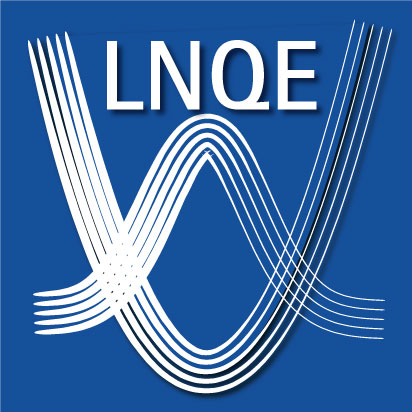Scientists at Leibniz University Hannover (LUH) have inaugurated a new X-ray photoelectron spectrometer (XPS) in the Laboratory of Nano and Quantum Engineering. The Swedish physicist Kai Siegbahn once received the Nobel Prize for the development of this experimental investigation method. Today, the major instrumentation is used to chemically analyze a variety of surfaces, from soft matter such as polymers to inorganic solids such as semiconductors and metals. It enables researchers to determine the elemental composition of the surface as well as the chemical environment of the respective elements.
The investigation and development of new materials is an important building block for optics and photonics research, which is one of the main areas of work at LUH. The 1.19 million euro facility is operated by the Institute of Physical Chemistry and Electrochemistry and the Institute of Inorganic Chemistry, and was funded in equal parts by the federal government and the state of Lower Saxony. Scientists and companies can carry out their own measurements, for example on surface changes caused by oxidation or aging processes, or commission them from the two institutes.
The XPS device is highly sensitive and works non-destructively in the top five nanometers of a sample, says Prof. Dr. Dirk Dorfs, Institute for Physical Chemistry and Electrochemistry and member of the Cluster of Excellence PhoenixD. In addition, he said, it offers Auger electron spectroscopy, ultraviolet photoelectron spectroscopy and an argon cluster gun for ablating the sample surface specifically for soft samples, as well as a heatable sample chamber, as other features. "Due to its many different structural as well as electronic characterization methods, the instrument enables broad usability for different questions," Dorfs says. "This is especially important for interdisciplinary education and research of young scientists in chemistry, physics or engineering disciplines."
At LUH, optics researchers are working on realizing complex optical systems through modern manufacturing processes for a fraction of today's price in a short development time. An elementary prerequisite for this are novel optical composite materials consisting of glass, plastics and nanomaterials, among others. Other important classes of materials that can be characterized with the instrument also include metal organic frameworks (MOFs) and colloidal nanocrystals. "The comprehensive investigation of these new materials is needed in many cases," says Prof. Dr. Nadja-C. Bigall, member of the board of the Cluster of Excellence PhoenixD at LUH and lead applicant of the new instrument. "Only in this way can we understand why the respective materials have corresponding properties, which is imperative for applications in optics and photonics, for example."
Contact person for service operations:
Apl. Prof. Dr. Dirk Dorfs, Institute of Physical Chemistry,
email: dirk.dorfs@pci.uni-hannover.de
Dr. Andreas Schaate, Institute of Inorganic Chemistry,
email: andreas.schaate@acb.uni-hannover.de
Note to editors:
For further information, please contact Mechtild Freiin v. Münchhausen, head of Communications and Marketing and spokesperson of Leibniz University Hannover (Tel. +49 511 762 -5342, email vonMuenchhausen@zuv.uni-hannover.de).









